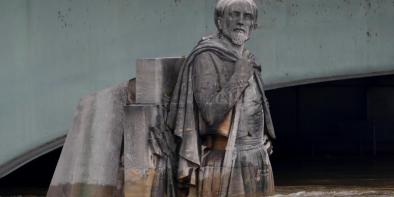Science Source
Understanding climate change projections for precipitation over western Europe with a weather typing approach
- States that precipitation over western Europe (WE) is projected to increase (decrease) roughly northward (equatorward) of 50°N during the 21st century
- States these changes are generally attributed to alterations in the regional large-scale circulation, e.g., jet stream, cyclone activity, and blocking frequencies
- Uses a novel weather typing within the sector (30°W–10°E, 25–70°N) for a more comprehensive dynamical interpretation of precipitation changes
- Identifies eight weather types: S1, S2, S3 (summertime types), W1, W2, W3 (wintertime types), B1, and B2 (blocking-like types)—their distinctive dynamical characteristics allow identifying the main large-scale precipitation-driving mechanisms
- Identifies an overestimation of weather type frequencies associated with zonal airflow
- Finds the frequencies of the three driest types (S1, B2, and W3) are projected to increase (mainly S1, +4%) in detriment of the rainiest types, particularly W1 (−3%)
Related Content
Headline

Jun 5, 2016 | Grist
Record-breaking floods hit Paris. Get used to it.
Headline

Jun 5, 2016 | The Big Story
Paris museum reopens as French floods slowly ease
Headline

Jun 5, 2016 | Climate News Network
Europe's floods come as no surprise
Science Source
| Hydrology and Earth System Sciences
Understanding flood regime changes in Europe: a state-of-the-art assessment
Hall, J., Arheimer et al


